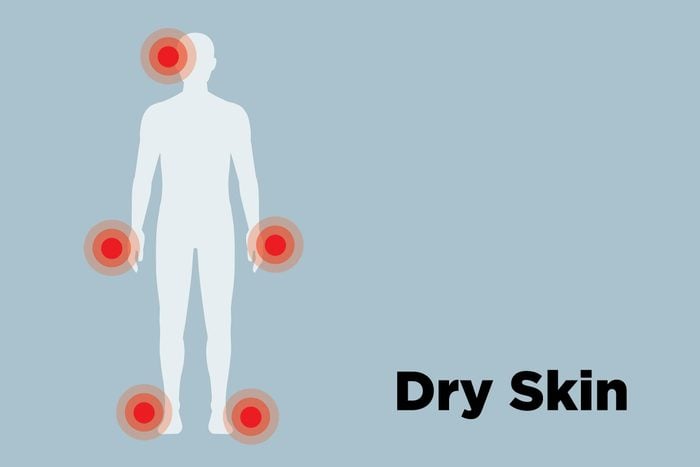
Dry skin
One of the most common causes of skin peeling is plain old dry skin or eczema, according to experts at the Mayo Clinic. There are many reasons for dry skin, including peeling and cracking in the fall and winter months. You might be naturally prone to dry skin, and cold, windy weather won’t help. Love your skin by using gentle cleansers and moisturizing well—your skin will love you back. (Learn the benefits of a cold shower for soothing your dry skin.)
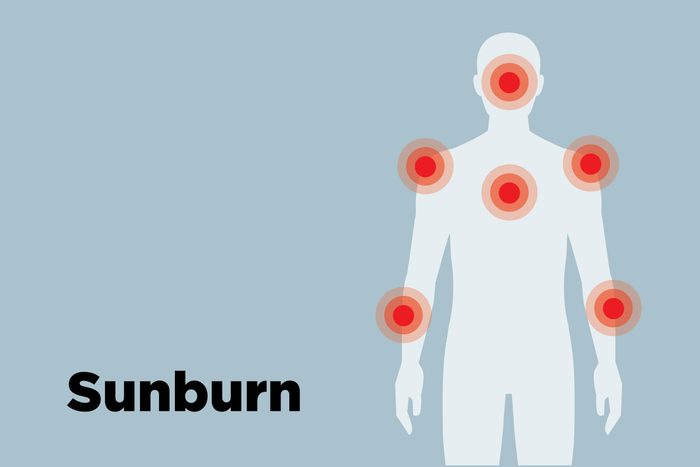
Sunburn
Painful sunburn actually kills off the top layer of skin, which is why your skin starts peeling shortly thereafter. So remember to use sunscreen and don’t stay too long in the sun. The American Academy of Dermatology suggests treating your sunburned, peeling skin by putting a cool, damp towel on your skin. After this soothing process, they recommend using an aloe- or soy-containing moisturizer. Of course, try to avoid the burn in the first place by using sunscreen.
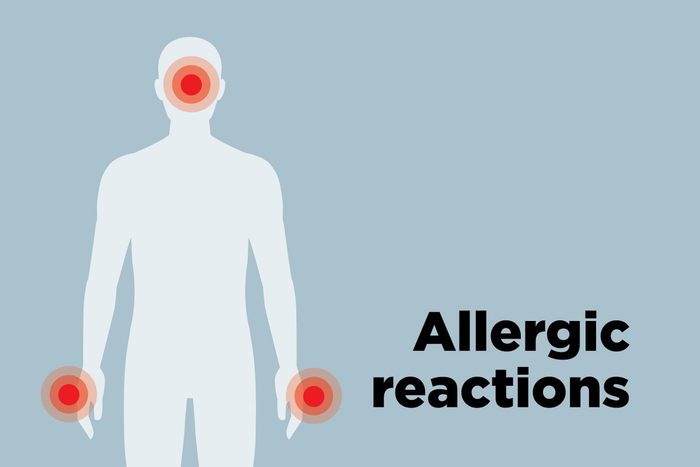
Common allergic reactions
Allergies are another frequent cause of skin peeling. Maybe you ate something which didn’t agree with you or used a new cosmetic or laundry soap. You may just have a mild irritation or rash, but a more serious reaction might make your skin peel. An allergic reaction can create direct skin damage via an inflammatory response, explains Ranella Hirsch, MD, president of Skincare Doctors in Boston, MA. “Application of topical over-the-counter cortisone can help along with the application of moisturizer and scrupulous avoidance of the offending product,” she says. But it doesn’t stop there. According to Rebecca Baxt, MD, of Baxt CosMedical in New Jersey, peeling skin can also result from an ordinary infection like a cold. “You’ve got a bad cold and a cough, and all of a sudden people get rashy and peel,” she says.
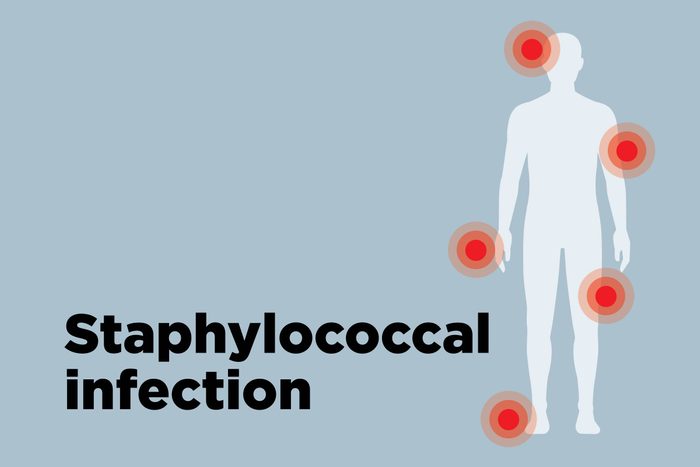
Staphylococcal infection
All skin has some level of bacteria on it, but sometimes those very microbes can cause an infection that might make your skin peel. One of the most common, a staphylococcal infection, usually starts with a single sore but spreads easily. According to the Merck Manual, some kinds of staph infection secrete toxic material. This causes the skin’s top layer to split from the rest of the skin and ultimately, may result in peeling over the entire body. This is a medical emergency and you should get help. In severe cases (usually in babies or young children), all the skin can be lost, so a staph infection is best treated promptly with antibiotics.
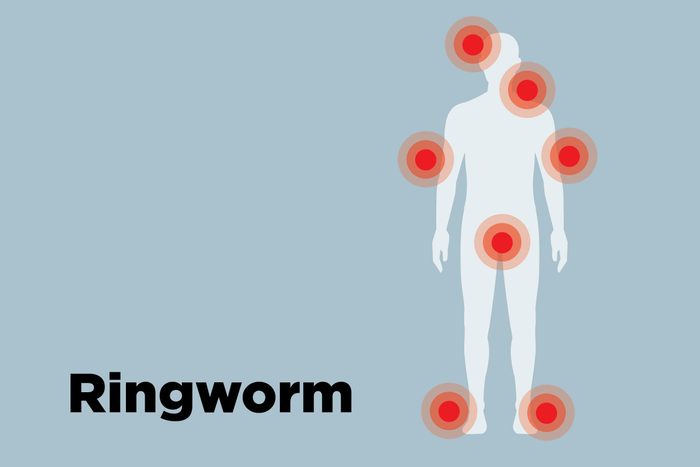
Fungal or yeast infection
These infections are some of the most easily spread because they thrive in warm damp conditions and are very contagious. They’re especially easy to pick up in public areas like swimming pools. “Fungal infections are very common between the toes and in other warm, moist places,” says Jonathan Kantor, MD, medical director at the Florida Center for Dermatology, in St. Augustine, Florida. If you do start to get red, peeling skin between your toes, he says that an easy home skin remedy is to put cotton pledgets between your toes, then letting the area dry out with a fan. OTC treatment is often effective, but some infections may need stronger prescription medication to banish it completely. As for ringworm, (tinea corporis), it’s a common fungal infection—no worms involved! It starts as a red itchy ring on the skin, which spreads if it’s not treated and can lead to skin peeling. It’s passed on by skin-to-skin contact.
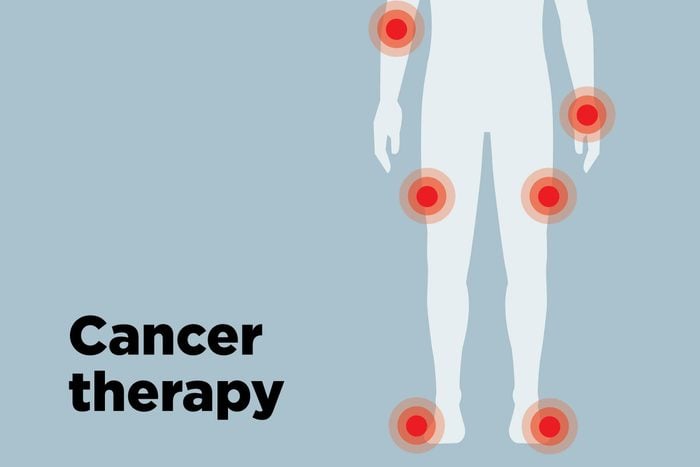
Results of cancer therapy
Some people suffer an adverse reaction after cancer treatment, especially following radiation therapy. To ease dry, peeling, and cracked skin, the American Cancer Society recommends several skin-saving ideas. Among them: bathe in cool or warm (not hot) water, use alcohol-free moisturizing creams twice daily, and avoid scrubbing skin during baths or showers. Peeling skin can be treated with corticosteroids from your physician, which will help you avoid picking up a secondary infection while your immune system is low.
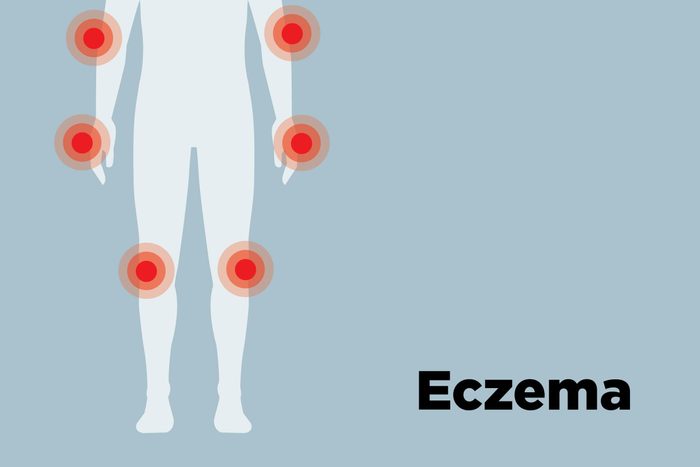
Eczema
Eczema causes red, itchy, and scaly skin, usually in the creases of the body like the elbows and knees, which can also weep and peel. Dr. Kantor says that it’s common in kids, especially along the inside of the arms, legs, and elsewhere. “The skin is usually rough and itchy skin and often goes along with allergies and hayfever,” he says. “Definitely see a doctor to discuss options.” Treatment for eczema includes corticosteroid creams and moisturizers.
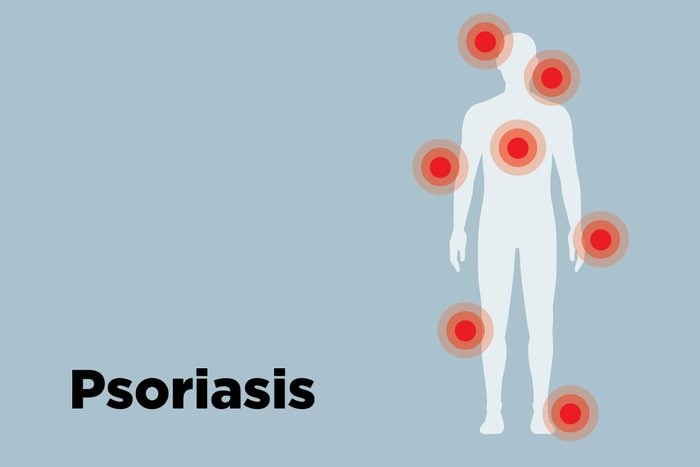
Psoriasis
Psoriasis also causes thickened, scaly skin that is itchy and painful. “The thick scaly areas are often on the elbows and knees,” says Dr. Kantor, “although it can be all over.” He says that psoriasis can be extremely mild or very serious; it depends on the person. Additionally, according to the National Psoriasis Foundation, this skin issue is also linked to other health conditions. Therefore, if you have psoriasis, you may be at an increased risk for developing diabetes, heart disease, depression, Chrone’s disease, and more. Visit your doctor and avoid these foods that can make psoriasis worse.
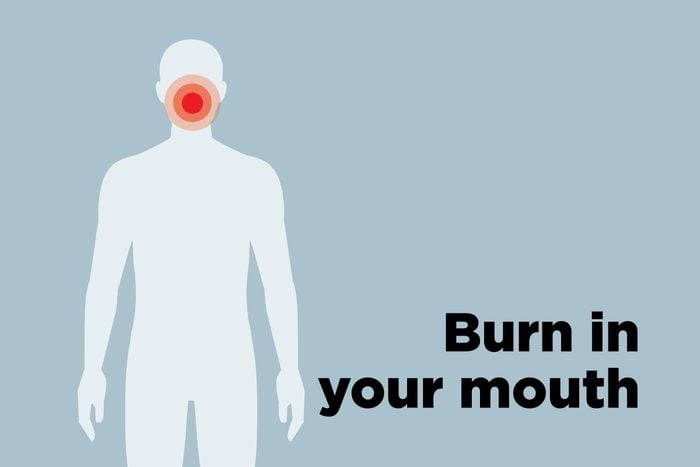
A burn in your mouth
There may be an obvious cause for peeling skin in your mouth, such as eating something caustic or accidentally scalding the inside of your mouth with a hot drink. Like other burns, this can make your skin peel, leaving painful sores in the mouth. A mild saline mouthwash may help treat minor injuries. If it’s serious, head to the ER as a swollen throat can be life-threatening.
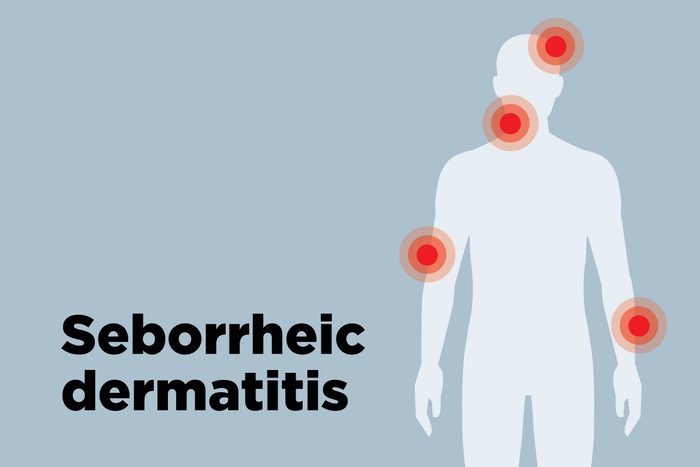
Seborrheic dermatitis
This can look similar to eczema and some other scalp conditions that cause skin itching and peeling. It also causes cradle cap in babies. There are many reasons for seborrheic dermatitis including genetics, stress, and yeast that’s already present on the skin. Some people are more prone to developing seborrheic dermatitis, such as those with acne or epilepsy, and those recovering from a heart attack or stroke. However, there are several more reasons why your scalp might be itchy. It can also be found on other areas of the body. This condition may clear on its own. If not, consider OTC dandruff shampoo.
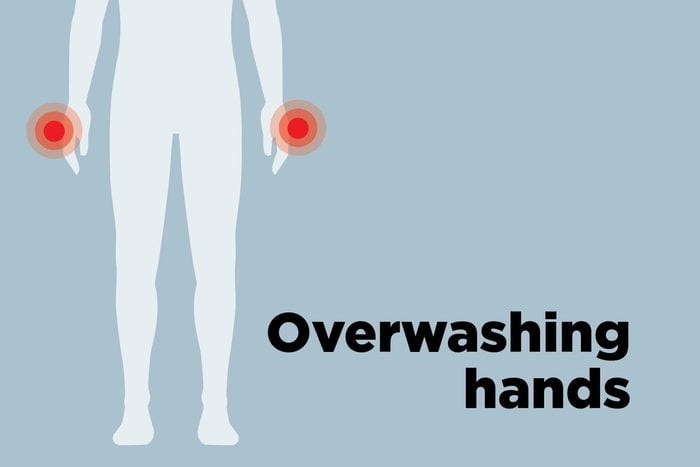
Overwashing hands
Simply having your hands in water for too long—or excessive hand washing—can be a common cause of skin peeling on hands. While it’s important to wash your hands, don’t overdo it. “It’s critical to minimize hand washing,” says Dr. Hirsch. She also suggests switching swapping harsh soaps with gentle cleansers and recommends moisturizing damp skin constantly. In fact, there are lots of things dermatologists avoid using on their hands, so learn from the experts.
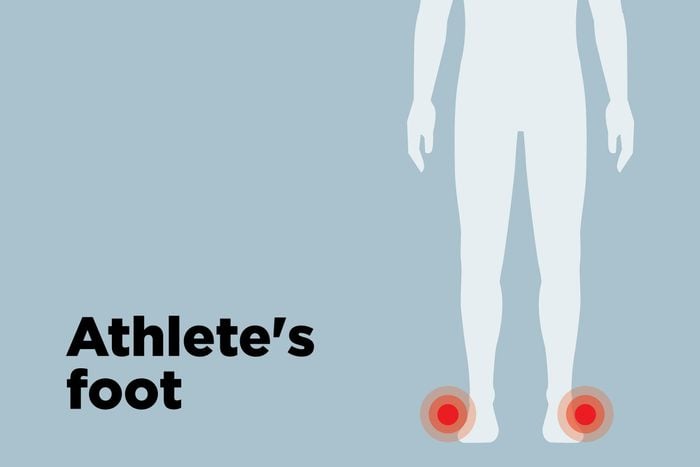
Athlete’s foot
Feet are most commonly prone to fungal, mold, or yeast infections. Mark Hinkes, a board-certified podiatrist in the Nashville, TN area explains, “When you put your foot into a closed shoe, it really acts like a cooker because it’s a warm dark moist area and so it actually cooks your foot.” One of the most common causes of peeling skin on feet is athlete’s foot (tinea pedis). This unpleasant infection can also spread to toenails and hands. It’s passed on in damp, humid conditions such as showers, swimming pools, locker rooms, and shared exercise mats. Although persistent, it’s not usually serious unless you have an underlying condition like diabetes or a lowered immune system. Still, Dr. Hinkes recommends visiting your podiatrist to find the exact problem.
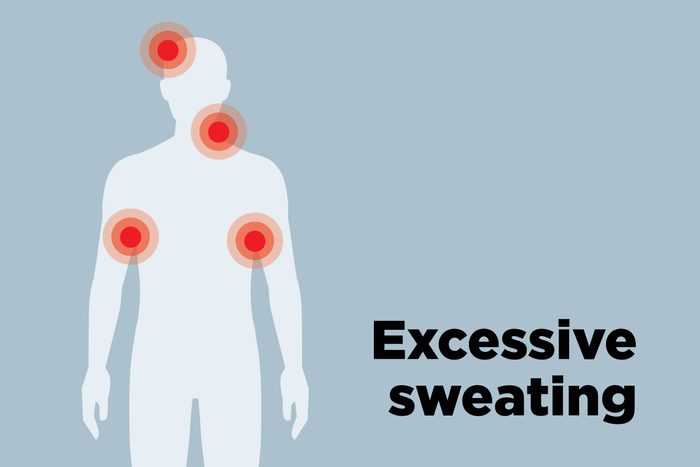
Excessive sweating
Excessive sweating, also known as hyperhidrosis, can lead to foot skin peeling. The constant wetness around the feet can result in trench foot, which the Centers for Disease Control and Prevention says includes symptoms like foot tingling, itching, pain, numbness, and a feeling of heaviness in the foot. They also note that blisters could form, “followed by skin and tissue dying and falling off.” Good foot hygiene is important in preventing this condition. “Take antibacterial soap and a soft toothbrush to scrub in between the toes,” says Dr. Hinkes. “Rinsing and drying are very important. I recommend using a hairdryer on the cool setting to make sure your foot gets dry.”
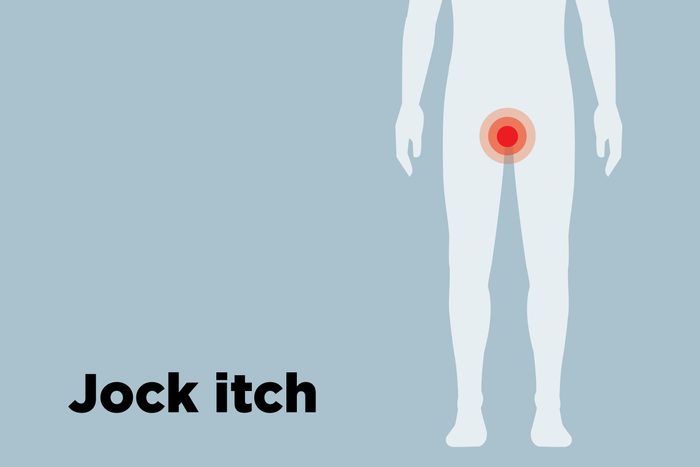
Jock itch
The moist warmth of the groin makes it the perfect breeding ground for yeast and fungal infections, including jock itch, explains Dr. Hinkes. Causing itchy, red, ring-shaped patches on the genitals, inner thigh, and buttocks, this condition is more common in men, especially those who are sporty and active (hence its name). Keep the area clean and dry and avoid tight jeans and underwear which can make the problem worse. Topical antifungals usually work well, but repeated infections might indicate a weakened immune system or diabetes, so get checked if it keeps reappearing.

